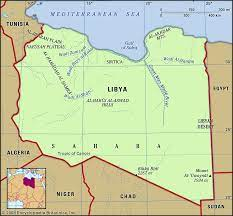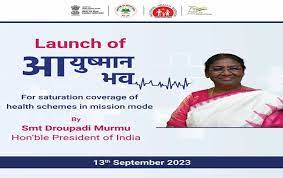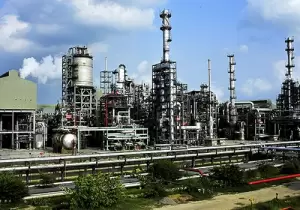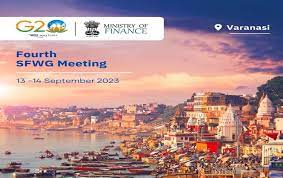Daily News Analysis.
Parivartan Yatra launched from Chhattisgarh
News: The Parivartan Yatra launched from Chhattisgarh is a significant political campaign that holds immense relevance in the state’s political landscape.
- This yatra is a well-orchestrated initiative by a political party, typically aimed at mobilizing support, connecting with voters, and garnering momentum for upcoming elections.
- It’s an integral part of Indian politics, where yatras are frequently used to communicate a party’s vision, manifesto, and leadership.
Geography of Chhattisgarh
- Chhattisgarh, located in central India, is a state known for its rich geographical diversity. The state is characterized by three major geographical regions: the northern plains, the central plateau, and the southern plateau.
- The northern plains are part of the fertile Gangetic plains and are crossed by several rivers, including the Mahanadi and its tributaries. These rivers not only support agriculture but also provide a habitat for diverse wildlife.
- The central plateau, comprising the Maikal Hills and the Chota Nagpur Plateau, is characterized by undulating terrain and rich forests. This region is known for its mineral resources, including coal, iron ore, and bauxite, making it an important mining hub.
- The southern plateau is marked by the Bastar Plateau, covered with dense forests and inhabited by various indigenous tribes. This region is known for its unique cultural heritage and biodiversity.
- Overall, Chhattisgarh’s diverse geography plays a vital role in shaping its economy, culture, and environment.
Why Chhattisgarh has chosen for this yatra.
- Chhattisgarh’s decision to embark on a “Parivartan Yatra” likely stems from the desire for transformative change and development.
- Yatras, meaning journeys or tours in Hindi, have been a common political strategy to connect with people and communicate a vision for progress.
- Chhattisgarh may have chosen this approach to engage with its citizens, garner support, and outline a roadmap for socio-economic growth, infrastructure development, and improved governance.
- It serves as a platform to address public concerns, highlight achievements, and build political momentum. Such yatras often aim to mobilize voters and rally support for the ruling party, emphasizing the promise of positive change.
Middle Eastern sovereign wealth funds
News: Middle Eastern sovereign wealth funds have emerged as powerful financial entities on the global stage, often referred to as the world’s ATM (Automated Teller Machine) due to their substantial assets and investments.
- These funds, typically owned and operated by oil-rich nations in the Middle East, have become major players in international finance, influencing global markets and economies in various ways.
- Middle Eastern sovereign wealth funds have become global financial powerhouses primarily due to their immense wealth, largely derived from oil revenues.
- Countries like Saudi Arabia, the UAE, and Qatar have built substantial financial reserves over decades of oil production.
- To diversify income and secure financial futures, they established sovereign wealth funds that invest worldwide in diverse assets and industries, both developed and emerging markets.
- These funds are seen as long-term, patient investors, providing stability during economic uncertainty and acting as a financial safety net.
- However, their investments often have geo-political motivations, strengthening diplomatic ties and aligning with strategic goals.
- Concerns about transparency and governance surround their global investments, emphasizing the need for ethical practices.
- In essence, Middle Eastern sovereign wealth funds serve as global financial pillars, with both positive and contentious aspects.
Libya: Over 10,000 people reported dead and thousands reported missing due to heavy flood.
News: Libya has recently been hit by a devastating natural disaster that has left over 11,300 people dead and more than 10,000 reported missing. The catastrophe in question is a heavy flood, a rare but catastrophic event in this North African nation.
Geography of Libya
- Location: Libya is located in North Africa, bordered by the Mediterranean Sea to the north. It shares its borders with several countries, including Egypt to the east, Sudan to the southeast, Chad and Niger to the south, Algeria to the west, and Tunisia to the northwest.
- Terrain: Libya’s landscape is predominantly desert, with the vast Libyan Desert covering much of its territory. The country is part of the Sahara Desert region, characterized by arid and barren expanses.
- Coastline: The northern coastline along the Mediterranean Sea is where most of Libya’s population resides. This region has a Mediterranean climate and features fertile coastal plains.
- Mountainous Regions: Libya has some mountainous areas, notably the Tibesti Mountains in the southwest and the Jebel Akhdar in the northeast. These regions receive more precipitation and support agriculture.
- Desertification: The encroachment of the Sahara Desert into Libya’s arable lands is a significant geographical challenge. Desertification threatens agriculture and water resources in the region.
- Natural Resources: Libya possesses abundant oil reserves, making it a major player in the global energy sector. These resources significantly impact the country’s economy and geopolitics.
Impact of Floods in Libya
- Infrastructural Damage: Floods in Libya can cause extensive damage to roads, bridges, buildings, and other infrastructure, disrupting daily life and economic activities.
- Loss of Life and Livelihoods: Flash floods can result in the loss of human lives and the displacement of communities. Livelihoods, especially in rural areas, can be severely affected as crops and livestock are washed away.
- Water Contamination: Floodwaters can lead to contamination of drinking water sources, posing health risks to the population.
- Economic Consequences: The cost of flood recovery and reconstruction can strain the country’s finances. This may divert resources from other development projects.
- Environmental Impact: Floods can damage fragile ecosystems, harm wildlife, and lead to soil erosion, exacerbating desertification issues.
- Humanitarian Challenges: Floods can create humanitarian crises, requiring assistance in terms of shelter, food, and medical care for affected populations.
- Climate Change: Climate change is increasing the frequency and intensity of extreme weather events, including floods, in many regions, including Libya.
President Droupadi Murmu to inaugurate Ayushman Bhav campaign on 13th September 2023
News: On the auspicious date of September 13, 2023, President Droupadi Murmu is set to inaugurate the highly anticipated “Ayushman Bhav” campaign, marking a significant milestone in India’s healthcare system. This campaign represents a visionary initiative aimed at improving healthcare access and affordability for millions of Indians.
What is this campaign?
- The “Ayushman Bhav” campaign is a comprehensive healthcare program designed to address various critical aspects of the healthcare ecosystem.
- It focuses on expanding healthcare infrastructure, enhancing the quality of medical services, and making healthcare more affordable and accessible to all segments of society.
- Under this initiative, there will be a substantial increase in the number of healthcare facilities, including hospitals and clinics, especially in underserved regions.
Objectives
- One of the campaign’s key objectives is to strengthen the health insurance coverage available to citizens.
- It aims to provide financial protection to families against the burden of unexpected medical expenses by offering comprehensive insurance plans.
- Additionally, the campaign will prioritize preventive healthcare measures, health education, and awareness programs to promote a healthier lifestyle and reduce the incidence of diseases.
Vice President Jagdeep Dhankhar to inaugurate International Conference on Dam Safety at Jaipur in Rajasthan.
News: In a significant development for both the state of Rajasthan and the field of dam safety, Vice President Jagdeep Dhankhar is poised to inaugurate the highly anticipated International Conference on Dam Safety in Jaipur. This event promises to bring together experts, policymakers, and stakeholders from around the world to discuss and deliberate on crucial aspects of dam safety and management.
Why dam safety is important in India
Dam safety is of paramount importance in India for several compelling reasons-
- Human Lives at Stake: Dams are designed to store and regulate vast amounts of water. If a dam were to fail or experience a breach, it could lead to catastrophic flooding downstream, endangering the lives of countless people who reside in the vicinity.
- Agricultural and Economic Impact: India heavily relies on agriculture, and many dams are used for irrigation. A dam failure can result in the inundation of farmland, leading to crop loss, economic devastation for farming communities, and potential food shortages.
- Hydroelectric Power Generation: Dams also play a crucial role in generating hydroelectric power. A breach or failure can disrupt the power supply, causing widespread blackouts and negatively impacting industrial and commercial activities.
- Infrastructure Protection: Dams often protect critical infrastructure such as roads, railways, and urban areas from flooding. Dam failures can lead to the destruction of this infrastructure, disrupting transportation networks and causing massive economic losses.
- Environmental Impact: Dam failures can result in the release of large volumes of water, sediment, and debris downstream, causing severe environmental damage, including soil erosion, loss of biodiversity, and contamination of water bodies.
- Reservoir Siltation: Over time, reservoirs accumulate silt, reducing their storage capacity. Regular inspections and maintenance are essential to manage this issue and ensure efficient water storage and supply.
- Climate Change and Extreme Weather Events: Changing weather patterns and increased frequency of extreme events due to climate change make dams more susceptible to stress and failure. Therefore, robust safety measures are vital to adapt to these challenges.
- Population Growth and Urbanization: India’s population continues to grow, and urban areas expand. This means that more people and infrastructure are at risk in case of a dam failure, underscoring the need for rigorous safety protocols.
- International Relations: India shares many river basins with neighboring countries. Ensuring dam safety is crucial to prevent disputes and conflicts over water-sharing agreements.
PM Modi to lay foundation stone of Downstream Petrochemical Complex and Refinery Expansion Project at BPCL’s Bina refinery at Sagar in MP
News: Prime Minister Narendra Modi is set to lay the foundation stone of a transformative project – the Downstream Petrochemical Complex and Refinery Expansion Project at Bharat Petroleum Corporation Limited’s (BPCL) Bina refinery in Sagar, Madhya Pradesh. This project holds immense significance for India’s energy and petrochemical sector, as it promises to enhance the nation’s self-reliance in the energy industry and contribute to economic growth.
Factors affecting the location of this industry
- Proximity to Raw Materials: Sagar’s location is strategic because it is relatively close to the crude oil sources and transportation networks. Access to raw materials is a crucial factor in the petrochemical and refining industry’s location decision.
- Transportation Infrastructure: The region boasts a well-developed transportation infrastructure, including highways and railways, which facilitates the movement of raw materials and finished products to various markets across India. This is vital for an industry heavily reliant on efficient logistics.
- Market Access: Sagar’s location places it within proximity to major demand centers in central and northern India. This ensures easier access to consumers and reduces transportation costs, enhancing the project’s economic viability.
- Economic Viability: The decision to expand the refinery in Sagar is likely influenced by the economic advantages of the region. Factors such as favorable taxation policies, access to skilled labor, and a conducive business environment can make Sagar an attractive location.
- Environmental Considerations: The environmental impact of such projects is always a significant consideration. Sagar’s location may have been chosen in part because it offers a suitable environmental context, perhaps with fewer ecological concerns compared to other areas.
- Strategic Importance: The expansion project at Bina refinery could be part of a broader strategic plan to enhance India’s energy security and self-reliance. Placing such facilities in central India can help distribute energy resources more equitably across the country.
- Government Initiatives: The Indian government often plays a role in selecting industry locations, offering incentives, and promoting specific regions for industrial development. Government support or incentives for locating the petrochemical complex in Sagar may have influenced this decision.
- Infrastructure Support: Sagar may have adequate supporting infrastructure, such as power supply, water resources, and wastewater treatment facilities, necessary for such a large-scale petrochemical project.
- Security and Stability: Ensuring security and stability for critical infrastructure like refineries is essential. The choice of Sagar may align with national security and stability considerations.
Fourth G20 Sustainable Finance Working Group Meeting begins in Varanasi
News: The Fourth G20 Sustainable Finance Working Group Meeting commenced on a significant note in the historic city of Varanasi, India. This meeting, which brings together finance experts, policymakers, and leaders from across the G20 nations, is a critical step towards advancing global sustainable finance initiatives and addressing pressing environmental and social challenges.
Working group focus
- The G20 Sustainable Finance Working Group focuses on driving financial sector policies that promote sustainability and resilience.
- This includes addressing climate change, enhancing environmental protection, fostering social inclusivity, and promoting sustainable economic development.
Significance of Varanasi
- Varanasi, known for its rich cultural heritage and spiritual significance, serves as a fitting backdrop for discussions on sustainability, as it underscores the interconnectedness of human prosperity and environmental harmony.
- The meeting in Varanasi signifies India’s commitment to sustainability and its active role within the G20. India, as the host country, has the opportunity to showcase its own sustainable finance initiatives and share its experiences with other G20 members.
Key topics on the agenda for the Fourth G20 Sustainable Finance Working Group Meeting include
- Climate Finance: Discussions will revolve around mobilizing finance to combat climate change, supporting renewable energy projects, and transitioning to a low-carbon economy.
- Sustainable Investment: Participants will explore ways to encourage private sector investments in sustainable projects and enterprises, highlighting the role of green bonds and sustainable investment funds.
- Inclusive Finance: The meeting will address the importance of ensuring financial inclusion for vulnerable and marginalized communities, and promoting responsible lending and microfinance initiatives.
- Environmental, Social, and Governance (ESG) Standards: There will be discussions on harmonizing ESG reporting standards and promoting transparency and accountability in sustainable finance.
- Partnerships: Building partnerships between governments, financial institutions, and civil society organizations to facilitate sustainable finance initiatives at a global scale will also be a focal point.










